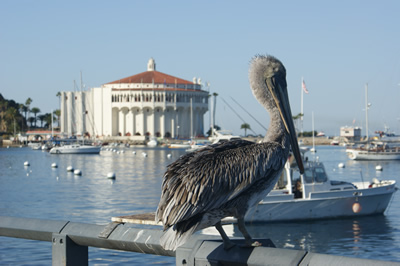Catalina is a small island off the coast of Long Beach, California, and its most famous landmark is the magnificent Art Deco Casino that overlooks Avalon Harbor. Built in May 1929 by chewing gum magnate William Wrigley Jr., who owned much of the island, the casino was a visionary project designed to showcase the glamour and innovation of its time. Contrary to the name, it was never intended as a gambling venue. Instead, it served as a state-of-the-art theatre for the first “talking movies,” alongside a grand ballroom for lavish social gatherings.
The island’s history dates back thousands of years to the Tongva people, who were the island’s original inhabitants. They called it Pimu and used it as a seasonal fishing and trading hub. In the 16th century, Spanish explorers claimed the island, and it was later passed through various private owners before becoming a popular tourist destination in the late 19th century. Wrigley purchased Catalina in 1919, investing heavily in its infrastructure and turning it into a premier resort location. His vision extended to preserving the island’s natural beauty while providing modern attractions, with the casino standing as a testament to his ambitious plans.
The casino’s theatre can seat 1,154 people and was designed specifically for optimal acoustics during the advent of sound films. The building also houses the world’s largest circular ballroom, boasting a 55-metre round dance floor capable of accommodating up to 6,000 guests. In recent years, the interior of the casino has been meticulously restored to its original splendour. Its amazing fresco walls, intricate murals, exquisite plasterwork, and ornate lighting fixtures now shine just as they did during its heyday, making it a must-visit landmark for those exploring Catalina Island.





